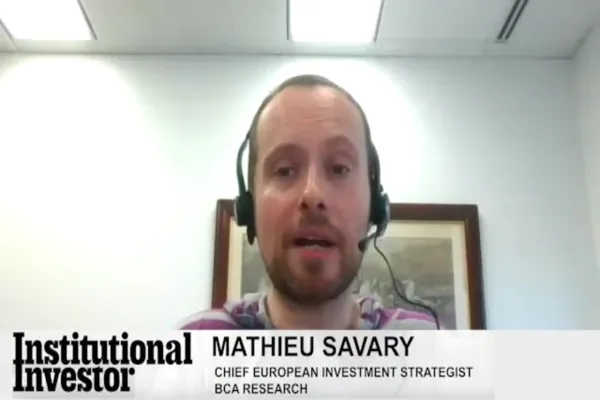Interbank lending rates are on the rise in Europe, as analysts and economists openly discuss the once-unthinkable idea that the eurozone itself may not survive in its current form.
Investment banks aren’t exactly predicting the end of the 17-state currency bloc as the world now knows it. Yet at least one big bank — Nomura — has warned its clients to start taking stock of which euro denominated debts would be converted into new national currencies in the event of a euro breakup. Those new national currencies would face immediate and steep valuation, creating huge losses for banks and other debt holders.
“At this point, the discussion of debt re-denomination is more of a theoretical exercise, but the thinking in the market is that the risk of a euro area breakup has certainly risen in the last 10 days,” says Jens Sondergaard, a London-based economist with Nomura who focuses on Europe.
Europe, as is often the case, is divided over what to do. Some officials such as the French president Nicolas Sarkozy are calling on the European Central Bank to pull the region back from the brink of disaster by purchasing massive amounts of sovereign debt from fiscally overextended nations such as Greece, Spain and Italy, thereby driving down their interest rates to sustainable levels. Others have called for less conventional measures such as nominal GDP targeting, or holding rates down until the economy reaches a certain level of growth. But the ECB and Germany, known for a fierce inflation-fighting stance, have resisted those calls. “We don’t have any new bazooka to pull out of the bag,” the German lawmaker Michael Meister told Bloomberg News.
Economists argue that given the choice between holding fast to its views and saving the eurozone, that the ECB will have no choice but to intervene. “What an awful mess it would be if the eurzone broke up,” says Darren Williams, a London-based economist with asset manager AllianceBernstein. “If the euro were just another fixed exchange rate system, it would be easy to break up. But it’s not. The financial interconnectedness and the liabilities between the member countries is enormous.”
So what is the ECB waiting for? The signs of crisis already are rising like flood waters, threatening to overwhelm the levees created by the International Monetary Fund and European Financial Stability Fund. French debt is a AAA credit in name only. On Tuesday, the interest rate on France’s 10 year debt was 158 basis points above that of AAA benchmark Germany, and one percentage point above that of the AAA-rated U.K.
European banks, fearful that they are vulnerable to massive losses on sovereign debt, are doing their overnight borrowing with the ECB, even though they could better rates by lending and borrowing amongst themselves. Some banks have no choice but to borrow from the ECB. The central bank lent out 247 billion euros to banks in the last week, according to data released on Tuesday. That was the highest level since 2009 and well above the 220 billion euros forecasted in a Reuters poll of traders.
Economists say ECB is holding off because it wants to put maximum pressure on Italy and other countries to move ahead with promised reforms and tighter fiscal union among member states before it comes to their rescue. “The ECB needs delivery of these actions,” Williams says.
Williams and Songergaard warn there are risks to the ECB’s delay. While investors may be right that the ECB eventually will to the rescue, there’s no guarantee that it will arrive on time. No one can be sure what that exact deadline might be and events are moving faster. The ECB probably has weeks, not months, in which to make a move, according to Williams.
As Sondergaard says, “It is a dangerous game of chicken.” The main risk is that the ECB will wait too long, sparking a severe recession and making it all that much harder to get the fiscal problems under control. And the longer it waits, the higher the odds of a failed bond auction by a member country or a disorderly default by one state or another.
Once a country is shut out of the market, it would have to undertake massive austerity measures to work its way back into the good graces of investors. That would damage the economy, assuming that they could be delivered.
Songergaard says the fiscal troubles in Europe are therefore likely to get worse before they get better. He expects the euro to fall to 1.30 over the next few months and Williams says he expects it to fall to 1.25. And austerity measures will hurt economic growth. A mild recession, with a contraction of about 1 percent, is widely expected this quarter.
Over the longer run, though, austerity measures could promote growth, according to Sondergaard. He notes that Germany’s current economic strength was built on the back of wrenching labor market reform in 2004 and 2005, and Norway and Sweden were hit with banking crisis in the ‘90s. “No one would question their triple A status today,” he says.
What are the odds that Europe as a whole can pull out of its current fiscal crisis and economic malaise?
“If the question is whether Europe makes it all the way to reform, I think the answer is a very close call. Shall we put the risk at 50-50? 55-45?” Sondergaard wonders. “The path to the end game is very difficult. Just look at Greece. They still face incredible challenges ahead.”






